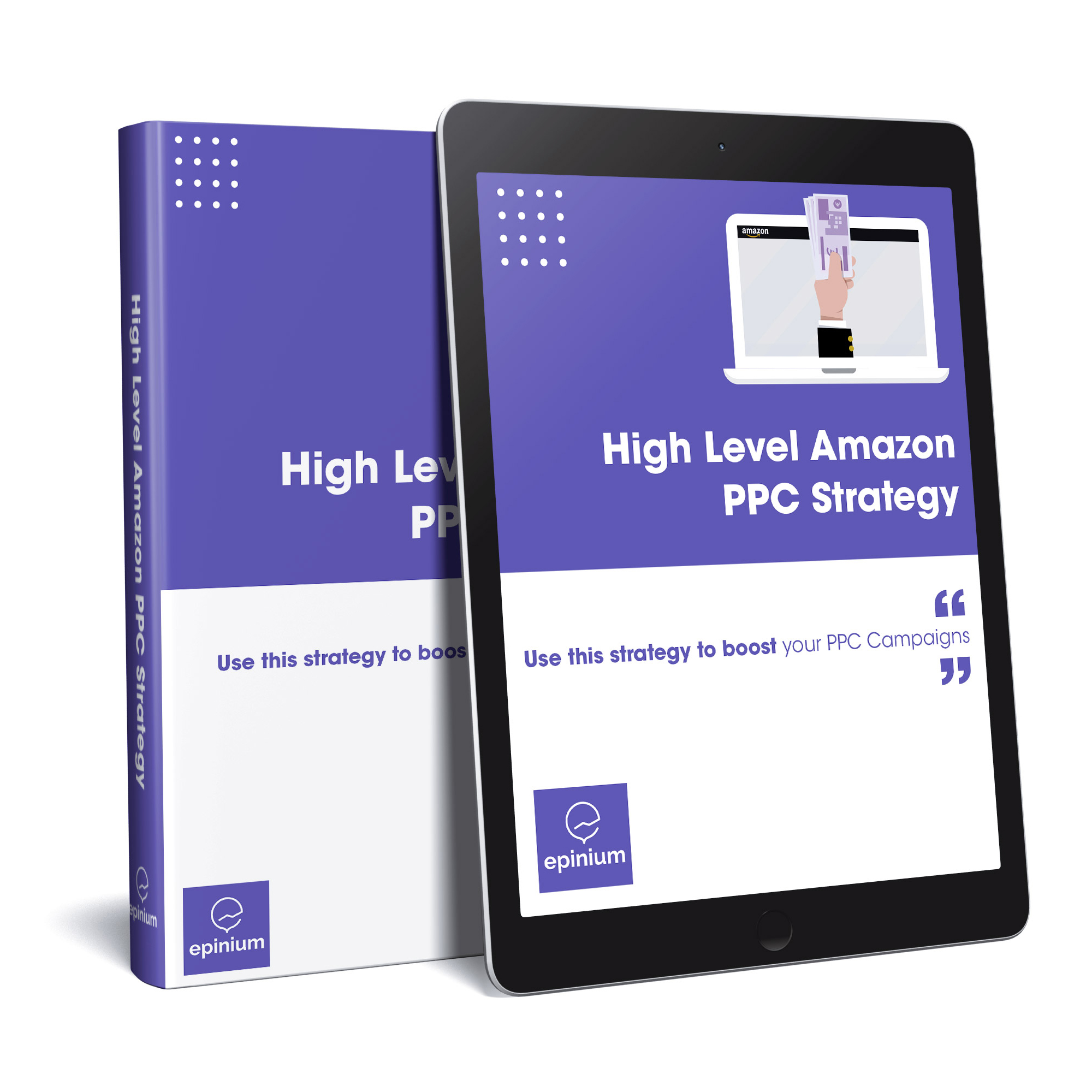Frequently, many brands that are selling quality and reputable products on Amazon do not achieve the expected traffic results despite generating good content. Therefore, they have to think about an Amazon performance improvement plan. In this matter, the Sponsored Ads platform is perfect to boost brand visibility and increase sales. This platform offers four classes of ads specifically: Sponsored Brands (notoriety), Sponsored Display (consideration), Sponsored Products (sales), and Amazon Stores (loyalty).
Each type of ads has a different purpose on its impact on the customer.
In this post, we are going to focus on Sponsored Brands. Thanks to them, brands can be positioned in different places on the search results pages. This is how they can impact Amazon users and give visibility to their products. The most typical places where they can be found are:
Top of search (top of search)
Sponsored Brands campaigns make brand products the first to be seen by users, which greatly increases visibility and traffic. A boosting detail of these campaigns is that the brand can redirect users to its Amazon Store. This action has a great domino effect, although it is less focused on direct conversion. It allows consumers to know the rest of the brand products and generate a sales halo effect on the rest of the catalog. You can start from this point to create your Amazon performance improvement plan.
Next, we gathered up 4 fundamental tips to get the most out of Sponsored Brands campaigns.
1. Define clear objectives for a certain period of time
Before starting to invest in advertising on Amazon, it is crucial that brands have their objectives very well outlined and know exactly what they want to achieve and the KPIs needed to improve through campaigns. This is why it is important to develop a good campaign strategy that outlines the way in which these objectives need to be achieved.
Brands can use Sponsored Brands for two different reasons. In the first place, if the objective of the brand is to create awareness, these ads are perfect. Once they are set and running, brands can analyze which campaigns are being the most impactful and which products are generating the most traffic and, ultimately, generate better results to make decisions.
On the other hand, while the key objective is to generate conversions, the best thing the brand could do is combine these ads with Sponsored Products to help boost the sales figures even more. Nor should brands forget the importance of the CPC of the campaigns in order to invest in what is necessary to appear in the spots that have been previously proposed.
2. Generate relevant keywords
For a Sponsored Brands campaign to be successful, it is essential to either use a software that helps do the research and continuous analysis of the keywords that produce the greatest impact and results or you can do it manually yourself. Specifically, for these ads both generic and brand keywords are required to ensure the visibility of the catalog.
The key is that those products that are most strategic for the brand are the ones that actually lead these campaigns. The idea is that if a consumer performs a generic search, the brand advertisement will offer them different types of products that may interest them and will take them to their brand store so that the user can get to see the entire catalog and decide what is what wants.
3. Customize Ads for Sponsored Brands campaigns
One of the features that give the most advantage for Sponsored Brands is the possibility of making a customizable advertisement. The ad will show the main image, a headline, and three brand products. This lets brands run many different ads in their campaigns.
At the same time, Amazon’s introduction of new ad placements within search results has given advertisers greater bidding power to manage their ads. Additionally, brands can choose to use Amazon’s automated bidding feature (which is the default setting) or set their own custom bid settings.
In fact, to have the best results in Sponsored Brands campaigns, it is highly recommended to launch many ads at the same time that impact users in different locations and test them for a minimum of 3 weeks.
4. Analyze the performance of the campaigns
Once the campaigns are up and running, brands must analyze their performance by focusing on the keywords that are being used to achieve the greatest possible impact and on those that are used as a brand defense.
On the other hand, although there are up to four different places where these ads can be viewed, Amazon generates data in two separate ways; on the one hand, those found in Top of Search and, on the other hand, the others (left and bottom lane of the search page).
The results of the appearances in Top of Search tend to show higher performance in the CTR compared to the rest of the campaigns. The Sponsored Brands that appear in the left area and those that appear at the bottom of the page generate a very high visibility but not so much as to achieve a CTR similar to that of the campaigns in Top of Search.
In this sense, the analysis of the results of the campaigns based on the different locations and the investment made are extremely important for the brand to optimize the campaigns and make the most favorable strategic decisions for the activation of its products in the channel. This way, the CTR will improve or at least keep at a good level that has already been achieved.
In Epinium, our Campaign Dashboard allows our clients to make the best decisions in order to get the best possible performance from them. The Dashboard offers data of the main KPI’s (sales, ACOS, conversion rate, CTR, etc.) This allows you to see which campaigns are performing better and thereby manage your budget more effectively.
This is it for today’s post about Amazon performance improvement plan! I f you wish to see more of this content, check out any of our posts!
As usual, leave a comment down below if you have any questions and we will kindly answer you!






